Can Buying Traffic or Views Get a YouTube Video Banned?
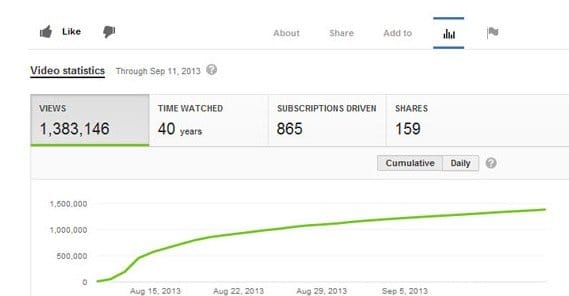
Buying views on YouTube is a strange ecosystem. There are a lot of conflicting reports online. On one hand, YouTube’s terms of service directly states that buying views “directly from third-party websites” is not allowed. They don’t state what the penalty is, however, just that you need to do your due diligence.
On the other hand, you have a thriving system of sellers on sites around the web, ranging from the Google-sponsored TrueView to a host of different merchants on Black Hat World. They have a whole range of different business models, but it all comes down to one thing; spending money to get more views.
The thing is, Google and YouTube have an incentive to allow view purchasing. They’re in on the game. You can run ads through Google-sponsored systems with a PPC model, and you get views out of it. It’s no different than third party sellers, except money doesn’t go to Google in those cases, so they’re not very fond of it.
At the same time, they can’t penalize you too hard when false views are detected. That opens the door to negative SEO, where a competitor’s channel buys millions of views for your videos to get you flagged and get your account blocked. If it were so easy, it would be a world full of conflict and aggressive takedowns, and no one wants that, least of all Google themselves.
Possible Penalties
There are several possible things that can happen if you buy views in a way that YouTube doesn’t sanction.
Number one is the least detrimental, and that’s “absolutely nothing.” In many cases, buying views doesn’t hurt you at all. Of course, it often doesn’t help you either, but I’ll get more into that later.
Number two is that the views can disappear. YouTube has a rather complex algorithm that determines whether a view is legitimate or not. That’s why views used to get stuck at 301+: they were performing an audit on your views and removing fakes from the total. YouTube has since changed their algorithm to a more sophisticated, active version, but that doesn’t change that it’s still there.
The third possible penalty for buying views is having a flag placed on your account. Now, I’m not sure if YouTube actually does this or not, but it’s possible that they have a background process that passively flags abusive content creators and makes their views less likely to show up in related video feeds or in search results.
A fourth option is having the video taken down, with no other penalty to your channel. View buying isn’t like a copyright strike. You can’t refute one, you can’t go to “view buying school” to learn the right way to buy views, you just would lose that video and all of its engagement. This does occasionally happen, but it’s far from guaranteed when you buy views.
The final and worst option would be to have your entire channel suspended. I haven’t heard of this happening in a long time, at least not in a way that I trust. Most people who complain that buying views got their account suspended are just hiding the fact that they were also using copyrighted material and were suffering under several strikes already. Rather than believe the truth, they blame whatever comes to mind.
Of course, any negative repercussion comes with an added penalty; the loss of the money you spent to get those views. Even the best sellers acknowledge that their views don’t necessarily have a high retention rate. You get the view, but it may be removed, or the user won’t care about your channel. Your investment gets a higher number on your video, but it doesn’t have a lasting impact on your channel or on your business.
A Matter of Scale
The primary reason, I think, that people fail when buying views is that they buy too many. Imagine this scenario. You have a channel full of videos that have maybe a dozen or a hundred views each. You want to get to the top, as quickly as possible, so you pick your most appealing video and buy 1,000,000 views, which should only cost you around $750.
What do you think is going to happen? People aren’t going to look at a poor channel full of poor videos that get no views, and decide that it’s great content just because one video seemingly went viral. It’s a very obvious case of buying, and it stretches the bounds of credulity to the extreme. No one is going to believe those million views are legitimate. Maybe if you spend that on every video, so your channel had that many views across all of its content, it might be more plausible. That’s a much more significant expense, however, and not many people are willing to try it.
Now image another scenario. You have the same channel and are in the same position, but instead of buying a million views, you only buy a thousand. Having a video spike up to a thousand, two thousand, four thousand views isn’t that unheard of. Heck, getting a video to the front page of Reddit can do all of that and more. Paying for PPC ads to a blog post with the video embedded can do that.
I’d believe that one outlier video gained a few thousand views when the rest of the channel doesn’t have much. Heck, I’ve had that happen to a personal channel I made as a test, did no marketing on, and didn’t buy views. One video happened to hit a trend and get a few thousand videos.
Now, if you buy a few thousand views at a time, your channel looks like it’s growing more organically. You’re not trying to compete with the latest pop star, you’re just trying to make a name for yourself. Buying a few views in that situation is relatively normal, whether it’s through ads or through a third party.
Types of Views
There’s a reason YouTube makes a distinction about buying views from some sources as opposed to others. There’s a reason they don’t blanket ban it all and instead say you need to investigate how the company does business before you buy their views. This is because the quality and the source of the views will be different from case to case.
At the bottom, you have bot views. These are, essentially, just browsers all loaded up on a computer, some going through proxies, loading your videos and watching them for a few seconds or a few minutes. No human being is actually watching your video. Whoever controls the bots is doing it purely to make money. The bots may be unsophisticated, which means their traffic is all more or less identical, easy to detect when YouTube goes to audit. These are the views most likely to be filtered right out without lingering, so they barely even count.
Working up a bit you have more sophisticated bots, bots that stagger their metrics and their actions so they’re harder to detect. Some of these will make it through, but again, they’re bots.
A bit higher up you have views from people who are being paid to watch videos for views. They may have multiple browsers or multiple computers up so they can make more money at a time, and they don’t really care about your videos. They probably set them to play and tab away to do other things, possibly even muting the videos as well. These people don’t care about the content, and they don’t benefit you in any way. If you’re making videos to promote a product and they don’t live in a place they can buy that product, it’s of no value to you.
Up above those disinterested users on the chain are users who actually could be interested, but are doing it for self-serving reasons. There are a lot of “earn while you browse” plugins that layer ads and run content in iFrames. Essentially, the viewer is getting paid to browse the web, spending a few seconds or a minute on each page, and cycling through. They may be interested in your video, but they aren’t likely to remember that interest beyond their next few jumps.
At the very top, of course, are users who are actually interested in your content. They sought it out via search, they found it via your website, or are in some way or another actually enjoying your content. These people, however, aren’t the kind of people who you’re getting when you buy views.
If you’re going to get a terms of use violation, you’re probably going to get it from the earlier types on the chain. Views that come from real people are more likely to stick around, though they might not benefit you beyond that number.
A Case for Numbers
Now, I frequently caution against buying bot views for your website or for a landing page in order to increase metrics, because those metrics don’t do anything for you. You can buy ten billion views to your landing page, but if they all come from bots, you’re getting exactly nothing out of it. Not one of those bots is going to buy your product, click your ads, or otherwise benefit your brand in any way.
However, on YouTube, the case is a little different. Those metrics can actually benefit you. First, when a video starts to take off, YouTube is likely to start promoting it passively. People will see it show up in their related videos lists, the “watch next” box at the end of a video, and in search results. The higher number, even if many of those views aren’t real, will benefit you.
Secondly, there’s the social component. When I see a video that only has 100 views, I’m not too keen on watching it. I’m basically going into it looking for an excuse to turn it off. When I see a video with 10,000 or more views, I’m more likely to be interested in what it has to say.
On the other hand, none of those views are going to transfer into conversions. You may be getting some minimal payment from YouTube ads, but you’re not going to get clicks through to your website, you’re not going to get affiliate marketing clicks, and you’re not going to get product purchases. It’s purely a YouTube self-serving system. It can get you big on YouTube, but it’s up to you to then leverage that size to make something out of it.
Methods of Gaining Views
There are a bunch of different ways view sellers get their views. Some of them are garbage, like the aforementioned bots. Some of them are more legitimate.
One example is covered in the Daily Dot. The seller in this case would buy up IP addresses for rent, throw the video up embedded on a simple website, and cycle through the IPs to view the site. Essentially, each new rented IP gets the video a view. No human other than the seller really ever visits the site, unless somehow it shows up in search, which it very likely won’t.
More legitimate services do a similar thing, with more sophistication and legitimacy. An example process might be to have a network of websites already, ranging in a variety of topics. The view seller would add in videos to these sites, embedded and playing, and then run ads to get legitimate people to come visit the site. The natural views of the site plus the paid ads work out to be the number of views the seller sells, and once that is met, they break the embed code so it looks like the embed isn’t working. They can swap out videos, swap out sites, and generally keep everything looking fresh, growing their own sites while growing your video and making money to do it.
Building Legitimacy
At the end of the day, you’re not going to benefit much from buying views unless you do as YouTube asks and talk to the seller about how the views are produced. Only if the views are coming from legitimate people will your videos really grow. Sure, some numbers get larger, but what do those numbers get you? Frankly, not much. You need to take real steps for real growth, if you want that growth to continue and stick around when you’re done.
 ContentPowered.com
ContentPowered.com
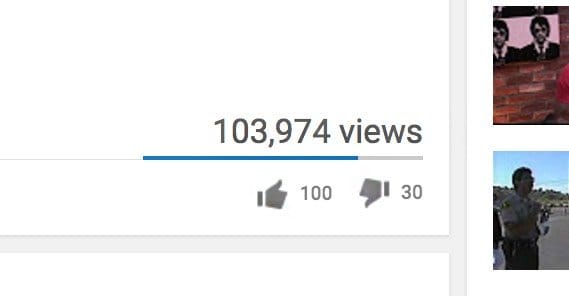
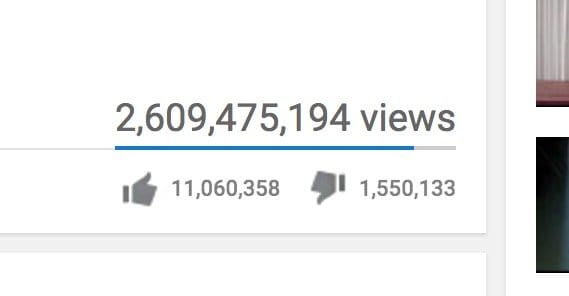

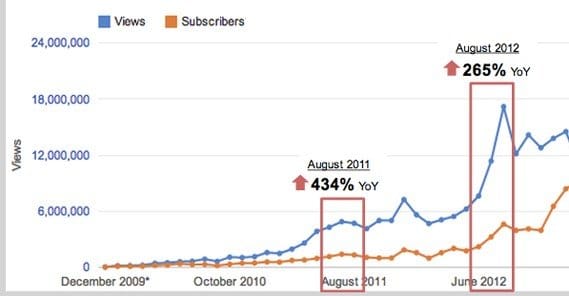
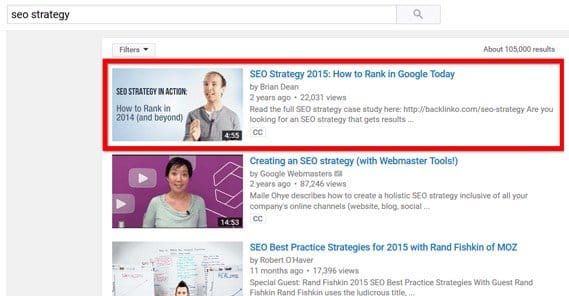




i bought views for myself and clients and everything was ok, i only got suspended for clicking my own ad and youtube sent details to my adsense account in regards to the violations, that’s it.
I agree on what you’ve written “buying views doesn’t hurt you at all.” Buying YouTube views is not illegal in any way, shape, or form. It should be noted that there are some tactics that are against YouTube’s terms of service (TOS) such as bot views or tricking people to watch a video, but even then they are 100% legal.
Buying YouTube views is not illegal in any way, shape, or form. It should be noted that there are some tactics that are against YouTube’s terms of service (TOS) such as bot views or tricking people to watch a video, but even then they are 100% legal.